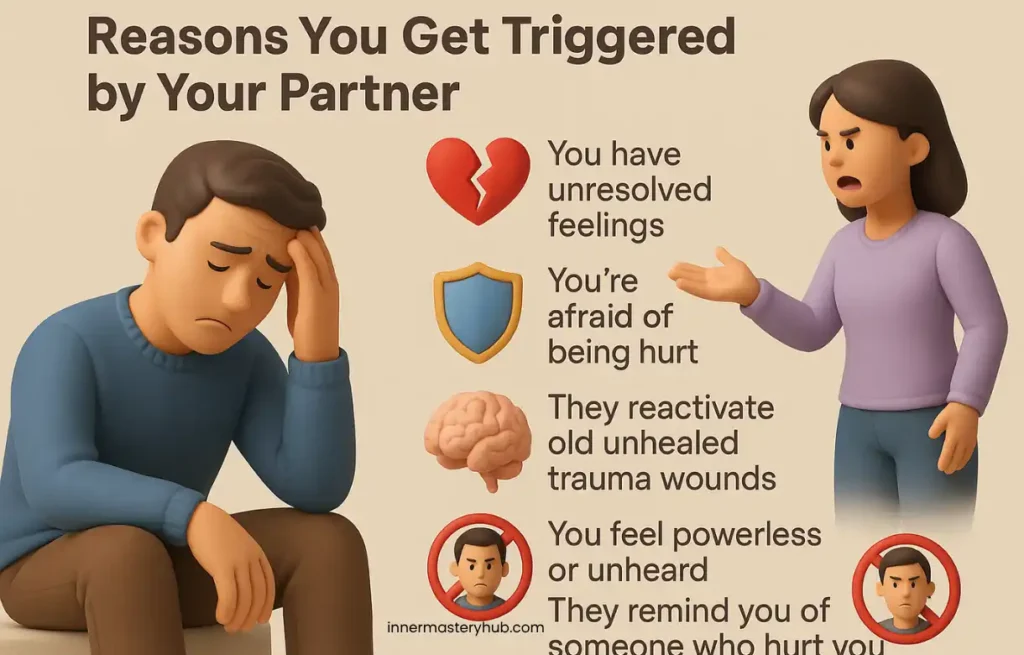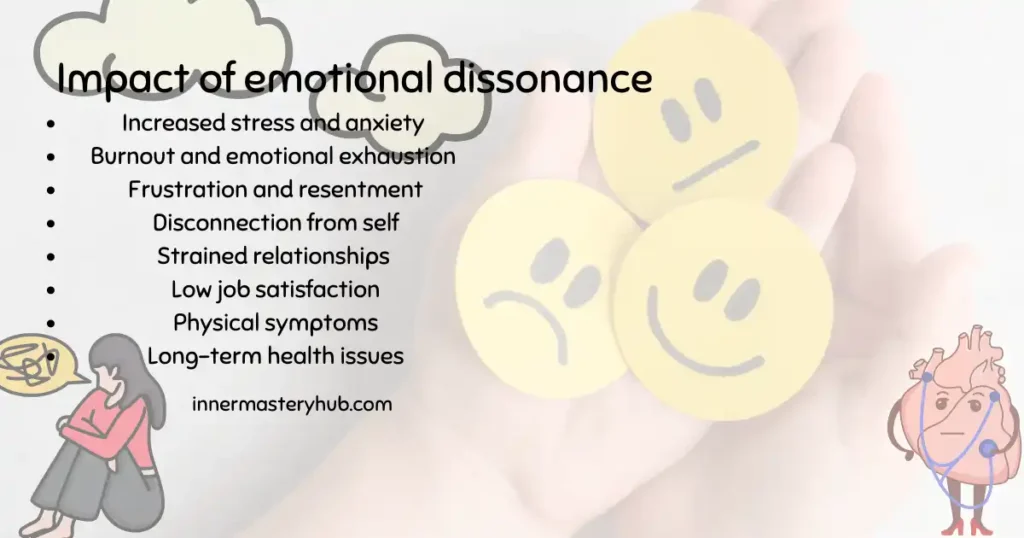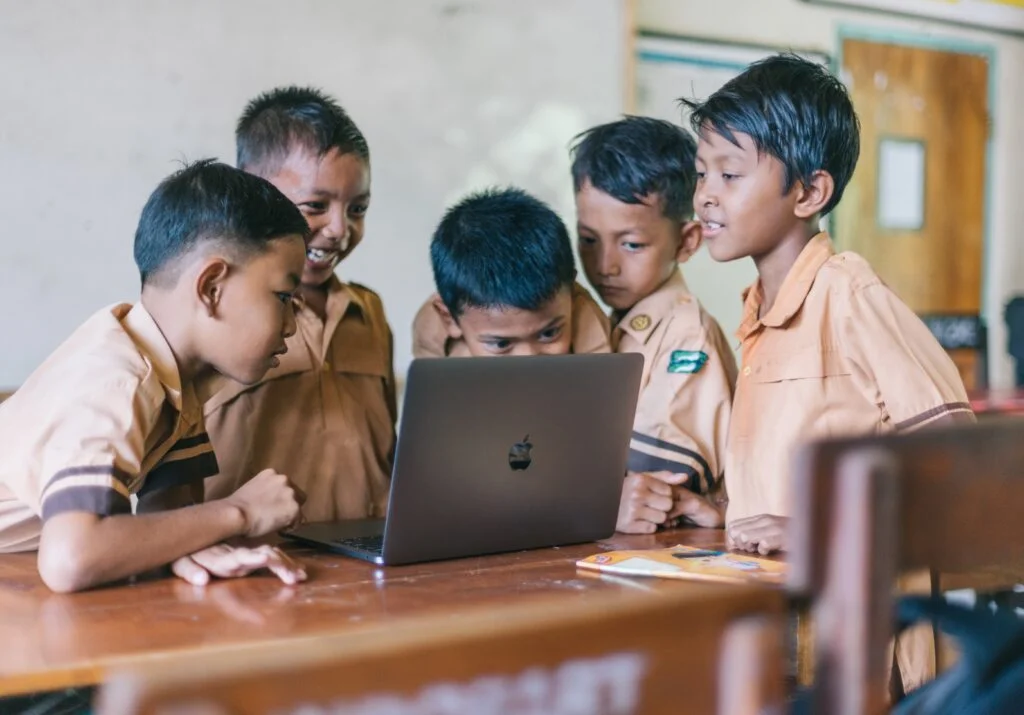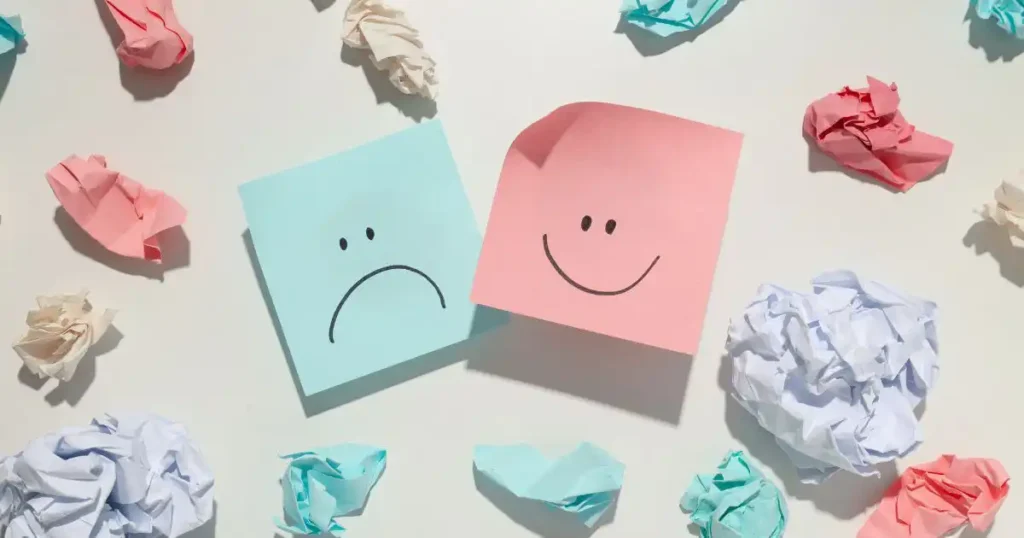Friend or Frenemy? The Levels of Friendship Explained

Let’s delve into the true psychology of friendship, rather than focusing on buddy zones and squad objectives. We have a network of friends, intimate partners, and perhaps even a soulmate. What exactly distinguishes these levels of friendship, though, beyond their labels?
Why do some relationships flourish while others decline through levels of friendship? It’s time to move past generalizations and explore the complex inner workings of our social environment.
This goes beyond informal discussions and gossip. Gaining insight into the psychology of friendship requires understanding oneself. It’s all about optimizing happiness, establishing clear boundaries, and building a supportive social network to give a sense of community. Are you prepared to go all in now? Together, let’s embark on a psychological journey into the core to learn about the four levels of friendship!
What are the different levels of friendship?
Friendship exists on a beautiful spectrum, not just a single level. Here are some common ways to categorize the 4 levels of friendship:
1. Acquaintance
Take yourself on a stroll around the campus of your university. There are faces around you; some you recognize, while others pass by as strangers. You have acquaintance pals in them, my friend.
An acquaintance is someone you know but aren’t very close to. It can be a coworker you don’t get along with, a neighbour, or a friend at your spouse’s work.
Cashiers you talk to about the weather, or the guy who always works out next to you on the treadmill. You smiled and chatted briefly, but it was a superficial interaction. Consider them delightful detours on your social highway rather than friendly pit stops, but they are nice to see.
Do you remember the neighbour who waves your dog farewell every morning or the coffee shop clerk who knows your latte order? Your enhanced acquaintances occasionally discuss your upcoming days or weekends.
There’s ample room to relax, even if you laugh together. Think of them as lovely faces that brighten your day through your window. Around 600 people are known by the average American.
The next time you see someone you recognize but wouldn’t consider a friend, realize they’re more than strangers. Friendly encounters expand your social network and brighten your days. Even a small smile brightens travel.
Signs of acquaintance:
- You see them but hardly talk to them.
- Small talk and hellos are your only conversations.
- Don’t tell them about your life.
- You may work or reside in the same office or block.
- You don’t want to know this individual intimately, as you don’t feel a close connection.
2. Casual friendship
Like that nicely worn-in pair of jeans, casual friends are comfortable, familiar, and necessary for daily wear. They may not be your closest friends, but they’re great for grabbing coffee, swapping memes, and going on unplanned trips.
Think of your gym companion who pushes you but doesn’t ask about your love life or your social group that shares excellent food and gossip. Be yourself, joke around, and enjoy similar hobbies without the emotional intensity that comes with a closer bond.
Casual friendships sprinkle pleasure and connection on your social cupcake without draining your emotional bandwidth. According to science, a person may have 150 casual acquaintances.
Check for these signs of a casual crew:
- Easy hangouts: You like coffee dates, movie nights, and weekend breakfasts. Good energy, no pressure.
- Sharing interests: You might like fitness, music, or that hilarious reality program everyone’s watching.
- Lighthearted discussions: You discuss life’s ups and downs without revealing your deepest secrets. Think humorous memes, relevant rants, and guidance.
- Casual connection: You may be yourself, wear sweats, and laugh without judgment.
Don’t expect a life-changing soulmate from every relationship. Great levels of friendship are sometimes just about having fun and enjoying each other’s company. So appreciate your casual buddies, who brighten your day and make you laugh!
3. Close friends
These individuals have strong relationships that endure over time and through various trials. Your closest pals know your wildest dreams and worst anxieties. Phone this friend at 2 a.m. with happy or horrible news, and they’ll answer.
These relationships go beyond mutual interests to a deep understanding of each other’s personalities, values, and experiences. Your close friends may be a childhood friend like family, a college friend you met on campus, or an adult acquaintance you quickly clicked with.
Shared history bonds strong connections. You’ve probably celebrated each other’s achievements, supported one another through tough times, and laughed a lot over internal jokes only you two understand.
The comfort of being yourself makes intimate connections all the more beautiful. You may be yourself without pretence or superficiality and still be accepted. These buddies are trusted for counsel, comfort, and shared moments.
You influence their life story, and they influence yours. Close levels of friendships are the pearls of your social life, prized for the richness, resilience, and genuine warmth they bring to your life. A person typically enjoys 10 to 12 close friendships.
Signs of close friendship:
- After years of knowing them, you come to love their company and enjoy spending time with them.
- You share a lot about yourself.
- You share hobbies, interests, and life perspectives.
- Maintain contact regardless of life situations.
4. Intimate friends
Intimate levels of friendship are rare, yet precious, pearls of belonging. These pals soak up your feelings and understand you intuitively. It’s like having a friend who co-authored sections of your story. In reality, Dunbar’s number theory suggests that the average person has five close pals, according to scientists.
Think about that person who’s been there through everything and knows your dreams, worries, and distinctive peculiarities. Deep levels of friendship require trust—you disclose your innermost thoughts, and they keep your secrets.
Shared experiences form an unspoken language between you and your friend. Understanding comes from sharing hardships, appreciating successes, and being present in one another’s lives.
Trust is key to intimate levels of friendships. Your emotionally intense confessions are safe with them, and they listen without judgment. This friend appreciates stillness and lets you express your feelings without words.
Close friendships often provide both physical comfort and emotional connection. A nice hug or reassuring touch reminds you that you’re not alone in discovering your inner circle. It takes years to find loyal friends.
These friends define you and provide colour to your life. Someone who would empathize with you as a good listener, speak to your mind, and help you become your best version.
Signs of an intimate friend:
- If you have a long-standing relationship with someone.
- You share similar values and ideas, feel comfortable in their company, and are at ease discussing intimate subjects.
- Your friendship works through all obstacles, and you stay in touch.
Theories of friendship development
Psychologists look beyond friendship levels. How people travel between universal stages of friendship interests them as well. Two hypotheses explain friendship formation.
Psychologist George Levinge’s ABCDE model
The ABCDE theory, developed by psychologist George Levinger, describes connections from start to finish. This hypothesis was originally designed to explain romantic relationships, but now applies to friendships and parent-child interactions.
The ABCDE model encompasses five stages:
A – Acquaintance: This is the initial stage of getting to know someone: casual conversations and shared activities foster connection.
B – Buildup: The connection develops familiarity and shared experiences at this stage. This phase is crucial for bonding and forming connections.
In the C-Continuation stage, the relationship solidifies. People actively maintain and invest in their relationships, deepening their understanding and commitment.
The term “deterioration” refers to not all relationships progressing positively. External or internal issues may damage the relationship. This phase addresses concerns or recognizes when the relationship may no longer benefit both parties.
E – Ending: This final stage entails ending the partnership. This phase ends the relationship, allowing people to move on or find new partners.
Levinger’s ABCDE theory provides a comprehensive framework for the growth and problems of varied partnerships. Its adaptability has made it widely used to analyze human interactions beyond romance.
Knapp and Vangelisti’s Relationship Model
Knapp and Vangelisti’s Relationship Model explains the stages of interpersonal relationships. This model, created by communication researchers Mark Knapp and Anita Vangelisti, describes the stages of relationship formation, development, and termination.
The model consists of two primary phases: Coming Together and Coming Apart. Each phase is further broken down into stages to explain its dynamics.
Coming Together Phase
The introduction stage of a relationship involves informal interactions and initial impressions. Small chats and basic observations can build rapport.
Initiating: During the experimentation stage, individuals explore shared interests and experiences, engaging in meaningful interactions. Establishing rapport and compatibility is key during this phase.
The intensification step involves deepening the connection. Stronger feelings, more intimate information, and bonding activities may occur.
At the integration stage, individuals become a unit with shared identities, social circles, and duties. Their bond becomes important to them.
The Bonding phase is the final step in the Coming Together phase, where individuals commit to a long-term relationship. Marriage, partnership, or other symbolic acts may formalize the relationship.
Breakup Phase
During the Coming Apart phase, individuals establish independence and identify distinctions. Integration unity is tested at this stage.
The practice of circumscribing reduces communication and self-disclosure. Avoiding uncomfortable topics and withdrawing emotionally may hinder interactions.
Stagnating: This stage is marked by inertia. Communication decreases, and the relationship may stagnate. Emotional distance increases.
During the avoidance stage, individuals intentionally build physical and emotional distance. To reduce discomfort, they may spend less time together and avoid conflict.
Terminating is the ultimate stage of the relationship, marking its formal termination. Mutual agreement, slow drifting apart, or dramatic separations can happen.
Knapp and Vangelisti’s Relationship Model provides a comprehensive framework for analyzing the multifaceted growth of interpersonal connections, revealing how relationships form and break down.
Why Is It Important?
We don’t usually consider what category to put our friendships in. We naturally handle these partnerships.
But it might be challenging to create new acquaintances for a variety of reasons:
- An extreme case of introversion
- An extreme degree of extraversion
- A mobile way of living
You can correct these by knowing how levels of friendships work. Let’s examine how.
An extreme case of introversion
Extreme introversion, characterized by a limited number of close connections, can be problematic in both personal and professional spheres. Career advancement is hindered by a lack of professional contacts, and a propensity for close relationships may restrict opportunities for casual love relationships. Striking a balance between close connections and a broader social circle can enhance life satisfaction.
Solution
Extreme introverts have social anxiety. Reaching out to strangers is horrible for them. You can unlearn this behaviour. It must be done gradually. Plan a baby-step sequence.
Attend social events first. Make eye contact with strangers. Then, sometimes, I nod or say “Hi” to others. And so on. Doing so will eventually desensitize you. Reaching out and forming friendships will eventually become easy.
An extreme degree of extraversion
Hardcore extroverts who have a lot of friends often lack deep connections with others. Even though they have many friends, none of them are close friends, which leaves them feeling alone in times of trouble. This is shown by a family member who is friendly with everyone but feels very lonely during hard times, when even family support seems hard to find.
Solution
It would be beneficial for you to strengthen some relationships as an extreme extrovert. You must develop them.
That’s easier said than done. Extreme extroverts remain stubborn. Hyperactive people find sitting for an hour torture.
Coaching or therapy can help. Extreme extroverts usually have a deep-seated cause for not paying attention. This is often because their parents never took the time to get close to them.
Therapist/coach relationships can be therapeutic. Extreme extroverts might focus on one connection by being forced to meet often.
3. A Mobile Lifestyle
The pandemic has accelerated the rise of digital nomads, making it harder to form and maintain close bonds. People who travel full-time often struggle to create lasting bonds because they frequently move around. Because these connections are temporary, people are hesitant to make commitments. This affects new acquaintances and deep bonds that tend to fade over time.
What Is the Solution?
Befriending other digital nomads may help. They comprehend it. They will also use more effort to make it work long-distance. Finally, they can meet you internationally.
Having multiple homes is another option. Travelling to the same cities year-round makes forming meaningful bonds with locals simpler. You might even visit old acquaintances back home to stay in touch.
What is the best level of friendship?
The best type of friendship is subjective and varies from individual to individual. A deep and genuine friendship, whether close, intimate, or a combination of both, often involves mutual respect, understanding, and emotional support. The ideal intimate friend is someone with one’s values, providing a sense of connection, joy, and companionship.
Let’s delve into the true psychology of friendship, rather than focusing on buddy zones and squad objectives. We have a network of friends, intimate partners, and perhaps even a soulmate. What exactly distinguishes these levels of friendship, though, beyond their labels? Why do some relationships flourish while others decline through levels of friendship? It’s time to move past generalizations and explore the complex inner workings of our social environment.
This goes beyond informal discussions and gossip. Gaining insight into the psychology of friendship levels requires understanding oneself. It’s all about optimizing happiness, establishing clear boundaries, and building a supportive social network to foster a sense of community.
Are you prepared to go all in now? Together, let’s embark on a psychological journey into the core to learn about the four levels of friendship!
What are the different levels of friendship?
Friendship exists on a beautiful spectrum, not just a single level. Here are some common ways to categorize the four levels of friendship:
1. Acquaintance
Take yourself on a stroll around the campus of your university. There are faces around you; some you recognize, while others pass by as strangers. You have acquaintance pals in them, my friend.
An acquaintance is someone you know but aren’t very close to. It can be a coworker you don’t get along with, a neighbour, or a friend at your spouse’s work.
Cashiers you talk to about the weather, or the guy who always works out next to you on the treadmill. You smiled and chatted briefly, but it was a superficial interaction. Consider them delightful detours on your social highway rather than friendly pit stops, but they are nice to see.
Do you remember the neighbour who waves your dog farewell every morning or the coffee shop clerk who knows your latte order? Your enhanced acquaintances occasionally discuss your upcoming days or weekends.
There’s ample room to relax, even if you laugh together. Think of them as lovely faces that brighten your day through your window. Around 600 persons are known by the average American.
The next time you see someone you recognize but wouldn’t consider a friend, realize they’re more than strangers. Friendly encounters expand your social network and brighten your days. Even a small smile brightens travel.
Signs of acquaintance:
- You see them but hardly talk to them.
- Small talk and hellos are your only conversations.
- Don’t tell them about your life.
- You may work or reside in the same office or block.
- You don’t want to know this individual intimately, as you don’t feel a close connection.
2. Casual friendship
Like that nicely worn-in pair of jeans, casual friends are comfortable, familiar, and necessary for daily wear. They may not be your closest friends, but they’re great for grabbing coffee, swapping memes, and going on unplanned trips.
Think of your gym companion who pushes you but doesn’t ask about your love life or your social group that shares excellent food and gossip. Be yourself, joke around, and enjoy similar hobbies without the emotional intensity that comes with a closer bond.
Casual friendships sprinkle pleasure and connection on your social cupcake without draining your emotional bandwidth. According to science, a person may have 150 casual acquaintances.
Check for these signs of a casual crew:
- Easy hangouts: You like coffee dates, movie nights, and weekend breakfasts. Good energy, no pressure.
- Sharing interests: You might like fitness, music, or that hilarious reality program everyone’s watching.
- Lighthearted discussions: You discuss life’s ups and downs without revealing your deepest secrets. Think humorous memes, relevant rants, and guidance.
- Casual connection: You may be yourself, wear sweats, and laugh without judgment.
Don’t expect a life-changing soulmate from every relationship. Great friendships are sometimes just about having fun and enjoying each other’s company. So appreciate your casual buddies, who brighten your day and make you laugh!
3. Close friends
These individuals have strong relationships that endure over time and through various trials. Your closest pals know your wildest dreams and worst anxieties. Phone this friend at 2 a.m. with happy or horrible news, and they’ll answer.
These relationships go beyond mutual interests to a deep understanding of each other’s personalities, values, and experiences. Your close friends may be a childhood friend like family, a college friend you met on campus, or an adult acquaintance you quickly clicked with.
Shared history bonds strong connections. You’ve probably celebrated each other’s achievements, supported one another through tough times, and laughed a lot over internal jokes only you two understand.
The comfort of being yourself makes intimate connections all the more beautiful. You may be yourself without pretence or superficiality and still be accepted. These buddies are trusted for counsel, comfort, and shared moments. You influence their life story, and they influence yours. Close friendships are the pearls of your social life, prized for the richness, resilience, and genuine warmth they bring to your life. A person typically enjoys 10 to 12 close friendships.
Signs of close friendship:
- After years of knowing them, you come to love their company and enjoy spending time with them.
- You share a lot about yourself.
- You share hobbies, interests, and life perspectives.
- Maintain contact regardless of life situations.
4. Intimate friends
Intimate friendships are rare, yet precious, pearls of belonging. These pals soak up your feelings and understand you intuitively. It’s like having a friend who co-authored sections of your story. In reality, Dunbar’s number theory suggests that the average person has five close pals, according to scientists.
Think about that person who’s been there through everything and knows your dreams, worries, and distinctive peculiarities. Deep friendships require trust—you disclose your innermost thoughts, and they keep your secrets.
Shared experiences form an unspoken language between you and your friend. Understanding comes from sharing hardships, appreciating successes, and being present in one another’s lives.
Trust is key to intimate friendships. Your emotionally intense confessions are safe with them, and they listen without judgment. This friend appreciates stillness and lets you express your feelings without words.
Close friendships often provide both physical comfort and emotional connection. A nice hug or reassuring touch reminds you that you’re not alone in discovering your inner circle. It takes years to find loyal friends.
These friends define you and provide colour to your life. Someone who would empathize with you as a good listener, speak to your mind, and help you become your best version.
Signs of an intimate friend:
- If you have a long-standing relationship with someone.
- You share similar values and ideas, feel at ease in their company, and are comfortable discussing intimate subjects.
- Your friendship works through all obstacles, and you stay in touch.
Theories of friendship development
Psychologists look beyond friendship levels. How people travel between universal stages of friendship interests them as well. Two hypotheses explain friendship formation.
Psychologist George Levinge’s ABCDE model
The ABCDE theory, developed by psychologist George Levinger, describes connections from start to finish. This hypothesis was originally designed to explain romantic relationships but now applies to friendships and parent-child interactions.
The ABCDE model encompasses five stages:
A – Acquaintance: This is the initial stage of getting to know someone: casual conversations and shared activities foster connection.
B – Buildup: The connection develops familiarity and shared experiences at this stage. This phase is crucial for bonding and forming connections.
In the C-Continuation stage, the relationship solidifies. People actively maintain and invest in their relationships, deepening their understanding and commitment.
The term “deterioration” refers to not all relationships progressing positively. External or internal issues may damage the relationship. This phase addresses concerns or recognizes when the relationship may no longer benefit both parties.
E – Ending: This final stage entails ending the partnership. This phase ends the relationship, allowing people to move on or find new partners.
Levinger’s ABCDE theory offers a comprehensive framework for understanding the growth and problems of diverse partnerships. Its adaptability has made it widely used to analyze human interactions beyond romance.
Knapp and Vangelisti’s Relationship Model
Knapp and Vangelisti’s Relationship Model explains the stages of interpersonal relationships. This model, created by communication researchers Mark Knapp and Anita Vangelisti, describes the stages of relationship formation, development, and termination.
The model consists of two primary phases: Coming Together and Coming Apart. Each phase is further broken down into phases to explain its dynamics.
Coming Together Phase
The introduction stage of a relationship involves informal interactions and initial impressions. Small chats and basic observations can build rapport.
Initiating: During the experimentation stage, individuals explore shared interests and experiences, engaging in meaningful interactions. Establishing rapport and compatibility is key during this phase.
The intensification step involves deepening the connection. Stronger feelings, more intimate information, and bonding activities may occur.
At the integration stage, individuals become a unit with shared identities, social circles, and duties. Their bond becomes important to them.
The Bonding phase is the final step in the Coming Together phase, where individuals commit to a long-term relationship. Marriage, partnership, or other symbolic acts may formalize the relationship.
Breakup Phase:
During the Coming Apart phase, individuals establish independence and identify distinctions. Integration unity is tested at this stage.
The practice of circumscribing reduces communication and self-disclosure. Avoiding uncomfortable topics and withdrawing emotionally may hinder interactions.
Stagnating: This stage is marked by inertia. Communication decreases, and the relationship may stagnate. Emotional distance increases.
During the avoidance stage, individuals intentionally build physical and emotional distance. To reduce discomfort, they may spend less time together and avoid conflict.
Terminating is the ultimate stage of the relationship, marking its formal termination. Mutual agreement, slow drifting apart, or dramatic separations can happen.
Knapp and Vangelisti’s Relationship Model provides a comprehensive framework for analyzing the multifaceted growth of interpersonal connections, revealing how relationships form and break down.
Why Is It Important?
We don’t usually consider what category to put our friendships in. We naturally handle these partnerships.
But it might be challenging to create new acquaintances for a variety of reasons:
- An extreme case of introversion
- An extreme degree of extraversion
- A mobile way of living
You can correct these by knowing how friendships work. Let’s examine how.
An extreme case of introversion
Extreme introversion, characterized by a limited number of close connections, can be problematic in both personal and professional spheres. Career advancement is hindered by a lack of professional contacts, and a propensity for close relationships may limit opportunities for casual romantic relationships. Striking a balance between close connections and a broader social circle can enhance life satisfaction.
Solution
Extreme introverts have social anxiety. Reaching out to strangers is horrible for them. You can unlearn this behaviour. It must be done gradually. Plan a baby-step sequence.
Attend social events first. Make eye contact with strangers. Then, sometimes, I nod or say “Hi” to others. And so on. Doing so will eventually desensitize you. Reaching out and forming friendships will eventually become easy.
An extreme degree of extraversion
Hardcore extroverts who have a lot of friends often lack deep connections with others. Even though they have many friends, none of them are close friends, which leaves them feeling alone in times of trouble. This is evident in a family member who is friendly with everyone but feels very lonely during difficult times, when even family support seems hard to find.
Solution
It would be beneficial for you to strengthen some relationships as an extreme extrovert. You must develop them.
That’s easier said than done. Extreme extroverts remain stubborn. Hyperactive people find sitting for an hour torture.
Coaching or therapy can help. Extreme extroverts usually have a deep-seated cause for not paying attention. This is often because their parents never took the time to get close to them.
Therapist/coach relationships can be therapeutic. Extreme extroverts might focus on one connection by being forced to meet often.
3. A Mobile Lifestyle
The pandemic has accelerated the rise of digital nomads, making it harder to form and maintain close bonds. People who travel full-time often struggle to create lasting bonds because they frequently move around. Because these connections are temporary, people are hesitant to make commitments. This affects new acquaintances and deep bonds that tend to fade over time.
What Is the Solution?
Befriending other digital nomads may help. They comprehend it. They will also use more effort to make it work long-distance. Finally, they can meet you internationally.
Having multiple homes is another option. Travelling to the same cities year-round makes forming meaningful bonds with locals simpler. You might even visit old acquaintances back home to stay in touch.
FAQS
What is a Level 3 friend?
A Level 3 friend typically falls into the category of a close friend, someone with whom you share personal experiences and emotions, but may not be as deeply connected as an intimate friend. This friendship is built on trust, shared interests, and mutual support, forming a meaningful bond that transcends surface-level interactions.
What are the highest levels of friendship?
The highest stage of friendship is often considered the “Intimate Friendship” stage. Individuals share deep emotional bonds, trust, and significant vulnerability in this profound connection. This stage involves a level of closeness that surpasses casual or even close friendships, often leading to lifelong connections.
Can a Male-Female Friendship Be Purely Platonic?
A male-female relationship or a handful of close friends can be platonic. Respect, shared interests, and emotional connection define friendship regardless of gender. Many people maintain platonic friendships despite societal conventions, demonstrating that genuine fellowship can exist without romantic undertones.
How long does the average friendship last?
The duration of an average friendship or group of friends varies widely and depends on factors such as shared experiences, life changes, and individual personalities. Some friendships develop over a lifetime, while others may evolve or fade. The strength of a friendship is often measured by the quality of the connection rather than its duration.
What is the best type of friendship?
The best type of friendship is subjective and varies from individual to individual. A deep and genuine friendship, whether close, intimate, or a combination of both, often involves mutual respect, understanding, and emotional support. The ideal intimate friend is someone with one’s values, providing a sense of connection, joy, and companionship.






